Latest News
A Family History of Witchcraft
October 17, 2012 by ramona
Filed under Articles, Genealogy Research Resources, Latest News, Sharing Genealogy Information
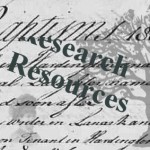 “In the Nineteenth day of March last I went to Salem Village, and lodged at Nathaniel Ingersol’s near to the Minister Mr. P.’s House, and presently after I came into my Lodging, Capt. Walcut’s Daughter Mary came to Lieut. Ingersol’s and spake to me; but suddenly after, as she stood by the Door, was bitten, so that she cried out of her Wrist, and looking on it with a Candle, we saw apparently the marks of Teeth, both upper and lower set, on each side of her Wrist.”
“In the Nineteenth day of March last I went to Salem Village, and lodged at Nathaniel Ingersol’s near to the Minister Mr. P.’s House, and presently after I came into my Lodging, Capt. Walcut’s Daughter Mary came to Lieut. Ingersol’s and spake to me; but suddenly after, as she stood by the Door, was bitten, so that she cried out of her Wrist, and looking on it with a Candle, we saw apparently the marks of Teeth, both upper and lower set, on each side of her Wrist.”
Such is one account of a person afflicted by witchcraft in Salem Village in 1692.
Mary, daughter to Militia Commander Jonathan Walcott was one of the first of the accusers in the Salem Witch trials and one of the accusers of Bridget Bishop, the first woman to be executed during the trials.
All Hallows Eve is quickly approaching and those with ancestors involved in witch trials may be interested in learning about some fantastic research resources.
Number one on the list is, The Wonders of the Invisible World Being an Account of the Tryals of Several Witches Lately Executed in New-England, to which is added A Farther Account of the Tryals of the New-England Witches written by Cotton Mather and Increase Mather. You can read about Mary, Bridget and many others in this account of the trials given by peoples involved. A digital copy of this book can be found free at Project Gutenberg.
Another interesting resource is The Associated Daughters of Early American Witches. This group focuses on sustaining the memory of those accused of witchcraft in Colonial America. This membership only society also actively searches out living descendents of the accused.
If your interests lie overseas, you will want to check out The Witch Hunts (1400-1800). Amidst the great information on the website, is an online mock-up of a witch-hunt set in Germany in 1628. In this simulation, you play a fictional character however, the events are historically accurate (warning, this may be disturbing to some). The outcome of your trial will depend on choices you make during the simulation.
One last resource is the Survey of Scottish Witchcraft 1563 – 1736. On this site, you will find a database containing the names of almost 4,000 people accused of witchcraft in Scotland.
Before you start trick or treating for your ancestors download Genealogy Beginner’s fantastic Family Tree Charts and Research Tracking Forms available with your 30-Day FREE TRIAL.
Immigrant Women: Our Courageous Ancestors
October 14, 2012 by ramona
Filed under Articles, Genealogy Technology, Latest News
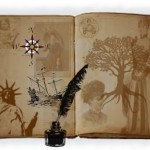 The book Immigrant Women, By Maxine Seller gives insight into the first impressions, hard lessons, joys and sorrows experienced by women who immigrated during the 19th and 20th centuries. In a collection of memoirs, oral histories, diaries and stories, the book records the specific struggles of women striving to build a new life in a new land.
The book Immigrant Women, By Maxine Seller gives insight into the first impressions, hard lessons, joys and sorrows experienced by women who immigrated during the 19th and 20th centuries. In a collection of memoirs, oral histories, diaries and stories, the book records the specific struggles of women striving to build a new life in a new land.
Most of the time we can only imagine what challenges our immigrant grandmothers faced and what they thought of their new home. Genealogy can only tell us so much: it is a treasure to read it in their words.
Excerpts
In her own words Marie Prisland, an immigrant from Slovinia, describes her arrival at Ellis Island in 1906. Her entry includes an eye opening description of what it was like the first time she became aware of cultural differences.
“An English speaking immigrant asked the near-by guard where we could get a drink of water. The guard withdrew and returned shortly with a pail of water, which he set before the group of women. Some men stepped forward quickly to have a drink, but the guard pushed them back saying: “Ladies First!” When the women learned what the guard had said, they were dumbfounded, for in Slovinia as in all Europe, women always were second to men.”
Leaving behind friends and family could lead to a lonely existence for many women as can be seen in this Norwegian immigrant women’s song.
Farewell, my old spinning wheel. How I shall miss you;
The thought of leaving you breaks the heart in my breast.
No more in the evening will we sit by the fireside, old friend of mine
and gossip together.
Ah, all that I see has its roots in my heart. And now they are torn out
Do you wonder it bleeds?
Immigrant Women, speaks in the voices of our grandmothers, engaging us in a narrative that opens a window into the past.
You can read Immigrant Women, free on Google books.
Genealogy, History, Tall Tales & Ghost Stories
October 11, 2012 by ramona
Filed under Articles, Family History, Latest News
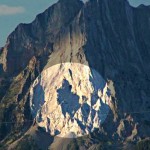 Every family historian knows that woven through the branches of their family tree are family stories and legends distorted by time.
Every family historian knows that woven through the branches of their family tree are family stories and legends distorted by time.
Sometimes however, genealogy plays a role in the legends of entire communities. This could not be truer than in the story of Fernie, a small coal-mining town nestled in a peaceful valley in the East Kootenay region of British Columbia, Canada.
The Tall Tale
While out seeking his fortune in 1887, a young prospector named William Fernie was camped beside a hunting party from the Kootenai tribe. He noticed a necklace of gleaming black stones hung about the neck of one of the chief’s daughters. William Fernie knew at once that the stones were coal and asked the chief where they could be obtained. The chief would not tell him, so he pursued the girl, promising marriage in order to learn the secret. Fernie however, after learning the location of the coal broke his promise…deserting the girl.
Angered, her mother set a curse upon the valley and all who would dwell there to die from fire, flood and strife.
To this day, high upon the rock face of Hosmer Mountain looms the ghostly shadow of the abandoned Indian Princess, seated upon a horse: an eerie mark of the curse, which has since plagued the valley with death, disaster and destruction
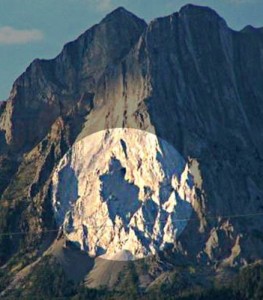 As fantastic, as this story seems there are small grains of truth. Following a trail of historical breadcrumbs and genealogical hints it was possible to find just enough fact in the fiction to understand how, combined with the enigmatic shadow, the disasters and a little imagination…this story might have come about.
As fantastic, as this story seems there are small grains of truth. Following a trail of historical breadcrumbs and genealogical hints it was possible to find just enough fact in the fiction to understand how, combined with the enigmatic shadow, the disasters and a little imagination…this story might have come about.
The Seeds of Truth
The Curse
In 1904, a large part of the city was destroyed by fire. In 1908 fire again claimed the city and with it the lives of several innocent citizens. Flood struck the city in 1916 and famine during the great depression. Relief came in 1964 when the Kootenai People and Chief Red Eagle lifted the curse in a ceremonial smoking of the peace pipe.
The History
The city of Fernie is named for its founder William Fernie, the nineteenth century prospector responsible for establishing the coal industry. However, Fernie’s contemporary Michael Phillips discovered the coal.
Phillips, a pioneer famous for forging a route through the Rocky Mountains (The Crows Nest Pass) was prospecting for gold when he came across the coal seams…about which he told Fernie.
The Genealogy
In 1886, Michael Phillips married Rowena David: daughter of Chief David and thus an Indian princess[1].
Legends and family lore are often deeply buried in historical fact. As time passes, these stories grow like a game of telephone: morphing into tall tales that are sometimes woven into the fabric of communities.
The moral of this story…
When digging through the roots of your family tree take some time to learn about the history of your ancestor’s communities. You may be pleasantly surprised by what you learn.
[1] http://www.archivescanada.ca/english/search/ItemDisplay.asp?sessionKey=1143825756048_206_191_57_199&l=-1&lvl=1&v=0&coll=1&itm=145090&rt=1&bill=1
[1] http://www.folklore.bc.ca/Locallegends.htm
Record Guides at RecordsBase.com
October 9, 2012 by ramona
Filed under Articles, Genealogy Research Resources, Latest News, Sharing Genealogy Information
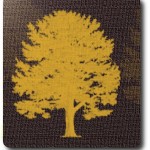 RecordsBase.com is a genealogy website designed to help family history hunters locate US documents to fill out the branches on their family tree. New to the site (in response to a review suggesting more resources would be helpful in this area) are record guides created to help genealogists locate the right records from their collection of over 2 billion public records.
RecordsBase.com is a genealogy website designed to help family history hunters locate US documents to fill out the branches on their family tree. New to the site (in response to a review suggesting more resources would be helpful in this area) are record guides created to help genealogists locate the right records from their collection of over 2 billion public records.
RecordsBase.com’s PR manager, Ashley Evans, says,
“Every state and county has its own way of storing public records and archival documents, by adding this content to our website, we help members navigate through that complex maze and find the records they need, no matter where and how they are stored. This is just one more way RecordsBase.com is listening to the customer and finding ways to meet their needs for a more pleasant user experience on our website.”
Included in the guides are:
- Steps on tracing archival documents
- Added content for the 100 largest counties in America
- Information provided by state
To use the guides simply click on the type of record you wish to search on the left sidebar. For instance clicking on Death Records will take you to a page that explains:
· Types of Death Records (certificates and indexes)
· Information Found in Records
· Locations for Death Records
· Restriction to Death Records Access
· Online Death Records Search
When you are ready to begin your research you will find that, the search forms are easy to use and allow you to search by individual state and county.
Like so many genealogy services, the site does require a fee based membership. Available in either a 1-Year Premium Membership that includes an unlimited number of searches including death, divorce, birth, military, marriage, census records, immigration lists, cemetery listings, obituaries & newspapers, surname history, and passenger lists.
A 3-Month Basic Membership that includes 3-months access to search millions of records, including death, divorce, birth, military, marriage, cemetery, and census records.
Before you begin searching, download your Family Tree Charts and Research Tracking Forms available with you 30-Day Free Trial to Genealogy beginner.
Genetic Genealogy, Historic Figures and Your DNA
October 5, 2012 by ramona
Filed under Articles, Genealogy Technology, Introduction to Genealogy, Latest News
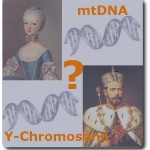 The world of genealogy is filled with family history stories connecting us to famous ancestors. After all, who wouldn’t want to include a celebrated historical figure in their family tree?
The world of genealogy is filled with family history stories connecting us to famous ancestors. After all, who wouldn’t want to include a celebrated historical figure in their family tree?
What if DNA testing could add fact to family fiction?
Recently I ran across a few websites that offered DNA testing for the purpose of matching clients DNA to that of famous historical figures. While I understand the allure of such testing, I have to admit that the skeptic in me was rather doubtful.
Among the historical figures listed were:
- King Tut
- Napolean Bonaparte
- Marie Antoinette
- Jesse James
- Genghis Khan
- Zar Nicholas Romanov
- Sven II Estridsen (Viking King of Denmark)
- Luke the Evangelist
- Petrarca (Italian Poet)
- Thomas Jefferson – Sally Hemmings
How it Works
In the case of some of the notables listed above, DNA samples have been gathered through various methods.
For instance, Marie Antoinette’s DNA was extracted from a lock of her hair and remains of one of her children. Jesse James DNA came from hair and bone fragments collected after an exhumation of his body. The DNA samples used for comparing DNA profiles with Napolean Bonaparte and Thomas Jefferson came from known descendants of these legendary figures.
So, how can they tell if you are a descendant of Genghis Khan, or ancient Irish and Scottish kings? The process of determining this comes from testing (on a very broad scale) to determine matches – or at the least – strong associations among DNA signatures and surnames. For example in the case of ancient Irish king, Nial of the Nine Hostages, geneticists studied 17 STR markers on the Y-chromosomes of a broad selection of Irish men. What they found was a connection between the DNA signature and several surnames.
Using DNA to establish your relationship to a famous historical figure works best in a controlled setting such as a one-name study. A good example of this is a study that already has a sample of DNA belonging to someone with a solid paper trail…AKA…a known descendant.
While these sites claim that they can match clients with historical figures, in most cases, they can only determine the likelihood of a relationship or tell if you share a common ancestor. The truth is that while genetic genealogy is a great tool…you will also need to do things the old-fashioned way and establish a paper trail.
Genealogy Wikis
October 1, 2012 by ramona
Filed under Articles, Genealogy Research Resources, Latest News, Sharing Genealogy Information
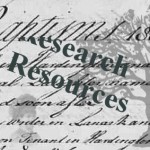 Have you used a wiki for genealogy?
Have you used a wiki for genealogy?
Genealogy wikis are growing in popularity and it is no wonder as they are shaping up to be a fantastic free resource for doing genealogy research. Not to mention a great way collaborate with others who have similar research interests.
Two genealogy Wikis that stand out are WeRelate (over 2,000,000 pages of information on individuals and families) and Wiki Tree (3.9 million profiles).
Both sites are free use and allow users to upload GEDCOM files, add scanned documents, photos and maps. In addition to this, the sites are filled with family history stories, biographies, and pedigrees (Family Trees).
Here is a short list of just some of the ways you can use a wiki for your genealogy:
- As a collaboration tool that allows researchers to work together to research, compare, publish, correct and update family tree information.
- As a research tool to locate data on your research interests
- As a great resource to learn about genealogy
- Plan a Family Reunion – advertise, plan, coordinate, and communicate with your family
- Blog about your research
Using a genealogy wiki is easy; as soon as you register, you can begin working on your personal genealogy pages by adding your profile, starting a watch list or simply go straight to building your family tree.
Family Tree: New Genealogy Spoof by HBO
September 26, 2012 by ramona
Filed under Articles, Latest News
 Genealogy buffs and family history fanatics are going to want to tune in to HBO’s upcoming new series spotlighting our favorite pastime.
Genealogy buffs and family history fanatics are going to want to tune in to HBO’s upcoming new series spotlighting our favorite pastime.
The new series aptly named Family Tree is the latest project from screenwriter-director Christopher Guest (Best in Show, Waiting for Guffman and a Mighty Wind).
The story centers on the character of Tom Chadwick. A man who after losing both his job and his girlfriend receives a mysterious box from an equally mysterious great aunt: the box containing curious stories starts Chadwick on a quest to research his family tree.
Cast of characters include:
Tom Chadwick: Chris O’Dowd (“Bridesmaids”)
Tom’s father, Keith: Michael McKean (Hairspray, The Homecoming)
Uncle Andy: Ed Begley Jr. (November at the Mark Taper Forum, “St. Elsewhere”)
Andy’s neighbor: Fred Willard (“Anchorman”)
A friend of Tom’s cousin: Don Lake (“Return to Me”)
HBO has ordered eight episodes of the mockumentary style British comedy, which will air in 30-minute episodes on BBC 2. No word yet on when the series will begin.
Genealogy and Disasters
September 24, 2012 by ramona
Filed under Articles, Family History, Latest News
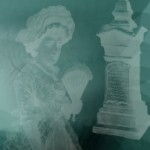 It may very well be the desire to know who we are and where we come from that leads us into family tree research…but it is often the family history stories that keep us going.
It may very well be the desire to know who we are and where we come from that leads us into family tree research…but it is often the family history stories that keep us going.
The clues we find in the written record such as an accidental or unusual cause of death can take us on a journey into the past: a journey that sometimes concludes in the discovery of an ancestor’s tragic end.
Such was the case with Clara Rawson whose 1908 death certificate stated the cause of death as “burnt in fire in Fernie”. A little digging through newspaper archives revealed that in August of 1908 there occurred a forest fire of epic proportions. The 1908 fire that killed Clara blazed hundreds of miles down a valley wiping out several communities and resulted in over 600 deaths.
Gendisasters.com
If you find hints that your ancestors perished from a disaster such as a fire, flue epidemic, earthquake, mine explosion, tornado, train wreck or landslide…not to mention a more famous one such as the sinking of the Titanic: Gendisasters.com is a site you will want to visit ASAP.
Gendisasters is a genealogy site dedicated to recording and publishing information involving histories disasters both natural and man made. The site allows family history hunters to search through their database by:
- Year (1755-2011)
- Location (within Canada and the US)
- Disaster
Finding Ancestors
The depth of the genealogical information included on the site ranges from sparse to quite rich in detail. For example, information on the 1903 landslide in Frank, Alberta, Canada gave the names of 55 victims along with occupation and in some cases family information. Such is the case with WILLIAM WARRINGTON, a miner whose wife and six children also perished in the disaster.
The site also contains newspaper stories of accidental deaths that are a little out of the ordinary such as:
- The tragic death of two young boys in Rosier Mo, who were attacked and eaten by wolves in 1898
- The Powell, WY man who was attacked and killed by a buck sheep (Ram) in 1929
- The boy from Arlington, MN who perished when a tombstone fell on him during a grave decorating party
- The 1920 death of two men who were killed by an elevator that fell 10 stories
If you find an unusual cause of death for one of your ancestors, Gendisaster may be the ideal site for you to flesh out the details of the event. Best of all…this genealogy site is free!
Genealogy Just Got Easier
September 19, 2012 by ramona
Filed under Articles, Genealogy Research Resources, Latest News, Sharing Genealogy Information
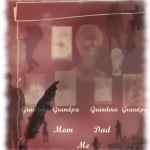 If you have been keeping your eye on MyHeritage.com, you already know that genealogy just got a little easier.
If you have been keeping your eye on MyHeritage.com, you already know that genealogy just got a little easier.
Why?
Because MyHeritage has an amazing new software that can help you find ancestors while you sleep.
The new software called Record Matching is constantly working to compare every individual entered in a family tree on their site to over 4 billion historical records. For users of My Heritage, Record Match will notify you when it has found matching documents such as:
- Birth, Marriage or Death documents
- Census records
- A tombstone photo
- A newspaper article
- Books
All of this information is found automatically using semantic analysis…and…it is in addition to the automatic matching that checks for your ancestors in other user’s family trees.
Family Tree Tools
Possibly the most phenomenal thing about this search software is…not only does it match Robert & Bob it can actually translate languages to find matches. Each match found comes with a confidence score using a star system so you can check out the most likely matches first, which is huge time saver.
Another little tool that family history hunters are going to love is the option to confirm or reject a match. However, one word of caution here, if you do find a match you will have to manually transfer the data y to your family tree and create your source citation to go with it.
The Price of an Ancestor
By now, you are probably wandering how much this is going to cost. Well here is a little good news – bad news. First, the good news; the Record Match feature is free to users with one or more family trees on my heritage. What this means is that you will be automatically notified of matches and given a short transcript or extract of the matching record. The bad news…viewing the full record or document requires a subscription. However, you do have a pay as you go option if you do not want to purchase a full subscription.
Visit MyHeritage Record Matches to find out more about this cool genealogy tool…but before you go, make sure you are ready with some genealogybeginner.com Family Tree Charts and Research tracking forms: available with your 30-day free trial.
Will Genealogy Solve the Mystery of Richard III?
September 17, 2012 by ramona
Filed under Articles, Latest News
This week a te am of archeologists from the University of Leicester discovered what may be the remains of Richard III, the last of the Plantagenet kings.
am of archeologists from the University of Leicester discovered what may be the remains of Richard III, the last of the Plantagenet kings.
Trails of clues gleaned from medieval documents lead them to a car park in Leicester once thought to be the choir area of Grey Friars Church: where the English king was purportedly buried. Here the archeologists unearthed the remains of a man in what appears to be a high status burial.
The team will attempt to positively identify the remains using a combination of documented evidence describing Richard III, genealogy and DNA testing.
Why do they believe this could be Richard III?
The skeletal remains appear to be in line with contemporary descriptions of both Richard’s physical characteristics and accounts of injuries at his death in the Battle of Bosworth Field in 1485.
University of Leicester director of corporate affairs, Richard Taylor stated that the remains show signs of the spinal deformity Scoliosis. This is consistent with a physical description of the king from Sir Thomas More’s “History of King Richard the Third” which reads:
little of stature, ill fetured of limmes, croke backed, his left shoulder much higher then his right,
Additionally, historical accounts of Richard’s injuries at death from manuscripts and chronicles provide at least circumstantial evidence that the body may indeed be that of the king.
Genealogy to the Rescue
Without the help of genealogy and the technology of DNA testing this discovery would likely remain in the realm of speculation for generations to come. However, the Richard III Society claims an ancestor has been identified.
Micheal Isben of London, the apparent 17th great grand nephew of the infamous king has consented to provide a sample of DNA. Ibsen’s relationship to Richard III is through his mother, a descendant of the kings sister Anne. To solve the mystery, geneticists from the Leicester University will attempt to extract a sample of mitochondrial DNA From the skeletal remains and compare them to Isben’s mtDNA.
Of course, this is all dependent upon how reliable the genealogical records are for Isben’s Family Tree.
